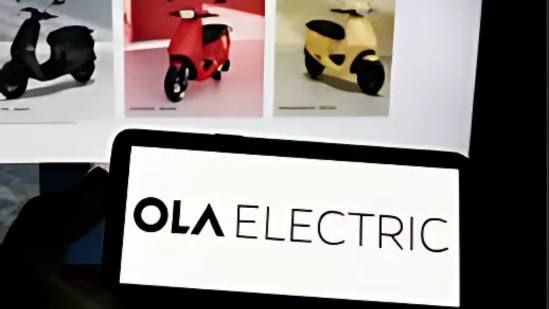
On June 3, 2025, Ola Electric Mobility Ltd. faced a major drop in its stock value. The share price declined by more than 7% in morning trading. This sharp fall came soon after a block deal worth nearly ₹731 crore, where around 14.22 crore shares were traded at ₹51 per share. Investors immediately reacted to this sudden move, raising questions about the company’s valuation and future prospects.
A key reason for the share slump is the large block deal, which many believe may have been triggered by insider concerns or a lack of confidence in the stock’s long-term growth. Investors often view such big deals as red flags, especially when they are followed by poor financial results.
Another major factor was Ola Electric’s disappointing Q4 financial results. The company reported a net loss of ₹870 crore in the fourth quarter. Even more concerning was the company’s 62% decline in revenue compared to the same period last year. This drastic fall in earnings has deeply affected investor sentiment. The company’s revenue and profit numbers are considered crucial for a fast-growing startup in the electric vehicle (EV) space.
Adding to the pressure is Ola Electric’s declining market share in India’s electric two-wheeler market. Just a year ago, the company controlled nearly 50% of the market, but that number has now dropped to just 20%. Rivals like TVS Motor and Bajaj Auto have expanded their presence, attracting more customers with competitive pricing and better service. This growing competition is seen as a major threat to Ola’s dominance.
To make things worse, Ola Electric is currently facing regulatory scrutiny. There are allegations that the company misreported sales data and failed to make proper financial disclosures. These claims have attracted attention from authorities, further denting the brand’s image. For investors, such allegations are worrying as they suggest possible internal weaknesses or even mismanagement.
Due to these combined issues—the block deal, poor financials, shrinking market share, and regulatory trouble—investor sentiment has turned negative. As a result, Ola Electric’s stock has seen a year-to-date decline of over 34%. It has now dropped well below its IPO listing price of ₹76, raising concerns among retail and institutional investors alike.
For Ola Electric to recover from this situation, the company needs to take urgent corrective steps. First, it must work on improving its financial performance. Reducing losses and increasing revenues should be the top priority. This may involve cost-cutting measures, product upgrades, and better supply chain management.
Second, the company must enhance transparency. Accurate and timely financial reporting is critical for regaining investor trust. The company must clearly communicate its business strategies and provide updates that show accountability and progress.
Third, Ola Electric must focus on strengthening its position in the EV market. With rising competition, it is essential for the company to invest in research and development, improve after-sales service, and create innovative solutions that set it apart from rivals.
Despite these challenges, Ola Electric has ambitious goals. It is working on developing lithium-ion batteries and plans to scale up production in the coming years. If executed well, these plans could open up new revenue streams and help the company bounce back. However, before chasing big dreams, the company must first stabilize its current operations and resolve its ongoing issues.
The 7% drop in Ola Electric’s share price highlights growing concerns among investors. The ₹731 crore block deal, coupled with huge quarterly losses, regulatory concerns, and market share erosion, has shaken market confidence. To recover, Ola Electric needs to rebuild trust through transparency, smart strategy, and strong execution.































